What is devore and how is fabric used?
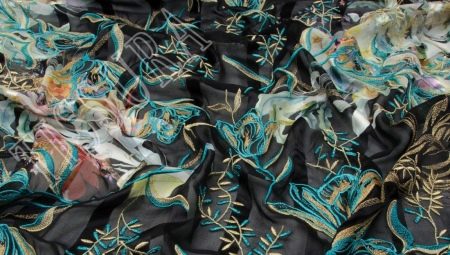
It is customary to call Devore a fabric with a textured decorative pattern. At the same time, the surface of the matter resembles a stained glass window or a thin pattern on glass. An unusual foreign name actually characterizes the technique of applying the pattern, and not a specific type of matter. At the same time, its structure takes on an exquisite and exclusive look.
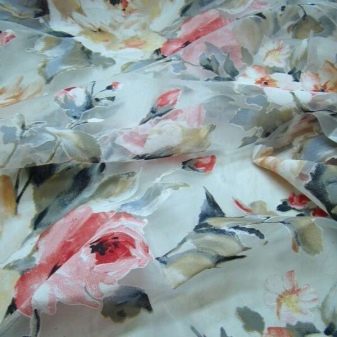
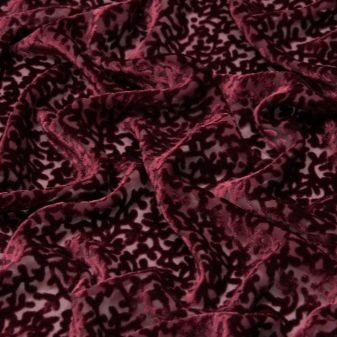
What it is?
French weavers were the first to familiarize themselves with the etching technique in the 19th century. The masters managed to stage a successful experiment - and the light was presented with an unrealistically airy, simply amazing material. The unique novelty quickly "pushed" the previously popular heavy fabrics such as brocade and jacquard. For the manufacture of ceremonial decorations, they began to use the Devoe fabric.
The popularity of this unusual fabric began to fade by the middle of the 20th century. The material received a revival in the era of the appearance of inexpensive artificial fibers, which were unanimously recognized by the textile industry at the dawn of the 80s. Thanks to the proliferation of synthetics in the modern textile market, many options for fabrics with a devore effect have appeared. At the same time, the price for the material turned out to be quite affordable.

Devorer is a French verb that is translated into Russian as "to eat" or "to eat". In this case, it characterizes a feature of fabric processing, in the process of which the fibers of the fabric are partially etched out, in other words, "eaten away".
The technological process leads to the fact that the processed fabric acquires lightness and airiness. On the delicate structure of the base, an intricate ornament of velvet or smooth satin threads appears, which seems to float on a transparent or matte base of matter.
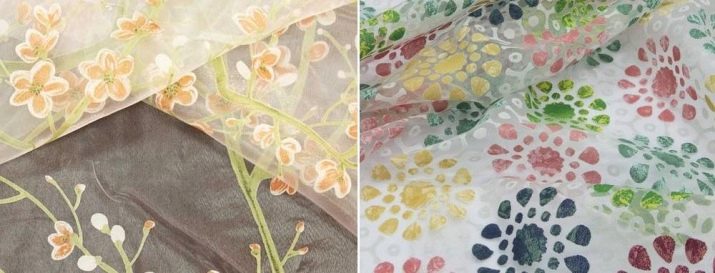
The etching technique is based on the use of chemicals in certain areas of matter. As a result, it is possible to create a series of fragments with different densities on the fabric.

In the manufacture of canvases, materials are used that contain cellulose fibers that undergo etching... A special gel with sodium bisulfate and aluminum sulfate is applied to the seamy part of the fabric. The reagent is selected separately for each type of textile.
A protective agent is applied before gel coating, then etching takes place exactly according to a specific pattern. The chemical composition that destroys cellulose is applied clearly along the template lines. When a substance interacts with fibers, transparent areas such as a veil or nylon appear.
The final stage of production is the processing of matter with a soda solution (by soaking for a certain period). During this process, chemical residues are finally washed out of the fibers, which makes the fabric completely safe.
Despite the fact that etching partially destroys the fabric, and it gains airiness, in reality it turns out to be practical and rather wearable.
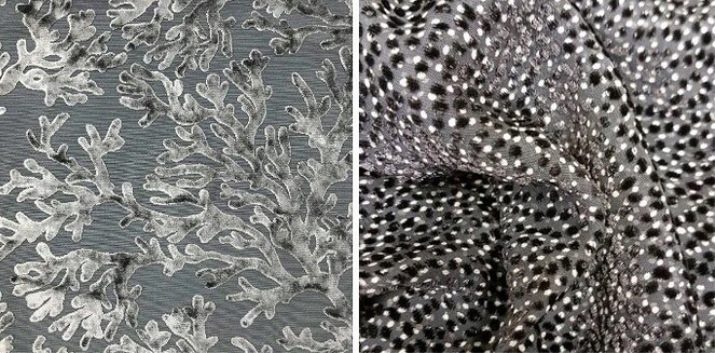
Decorative material, reminiscent of a luxurious stained glass window, is light and pleasant to the touch. The structure of the patterns in the ornament is smooth silky or soft velvet.
Devore fabric has the following benefits:
-
wear-resistant and durable;
-
tear resistant;
-
does not fade in the active sun;
-
absorbs moisture well and dries quickly;
-
retains heat (depending on the source material);
-
allows air to pass through;
-
does not provoke irritation and allergies;
-
easy to operate and not burdensome to care for.
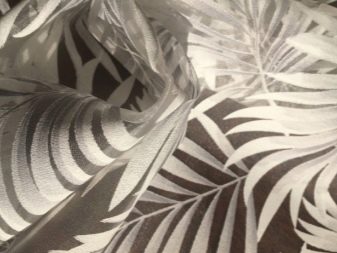
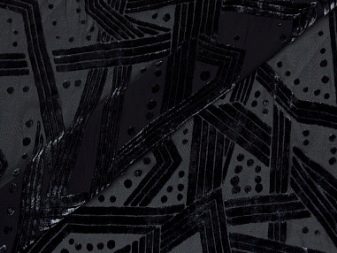
Views
The production of canvas using the devore technique can take place in different ways:
-
liquid (using reagents);
-
electromechanical (exposure to an electric field);
-
dry (ionization method).
Etching is done according to the planned design and the substrate used. It is she who affects the density and properties of matter.

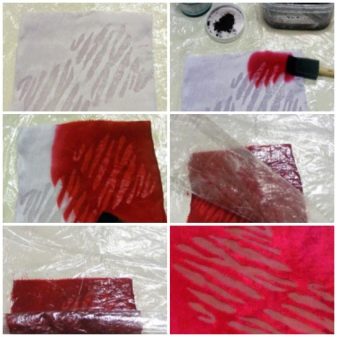
Fabrics with a velvety texture are in great demand. But, regardless of preferences, all types must meet the primary requirement: in the description of their composition, there must be cellulose fibers. Linen, cotton, silk and viscose are used as the main raw materials. It is on the basis of mixed textiles with the indicated components that a particularly stable version of devore is obtained. But the most expensive one is carrying out the technique on natural silk.
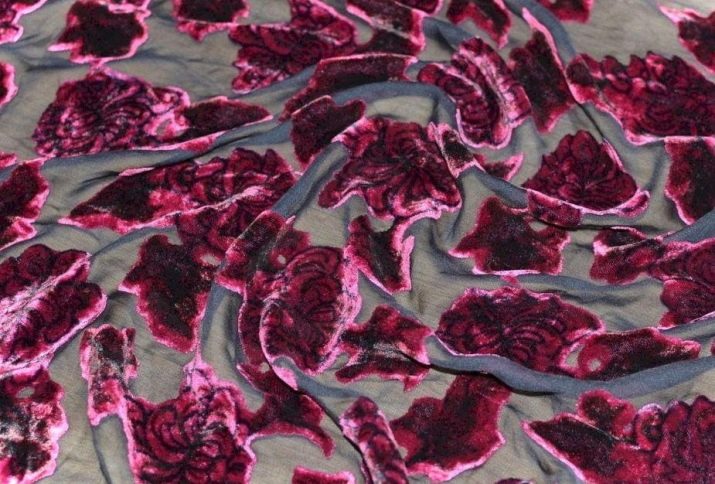
Artificial and mixed fabrics treated with Devore are endowed with strength, elasticity and resistance to fading. The predominance of natural fibers ensures their hygroscopicity, air permeability and hypoallergenicity.
The Devore fabric group includes six types, different in their composition:
-
silk;
-
velvet;
-
velours;
-
organza;
-
satin;
-
chiffon.
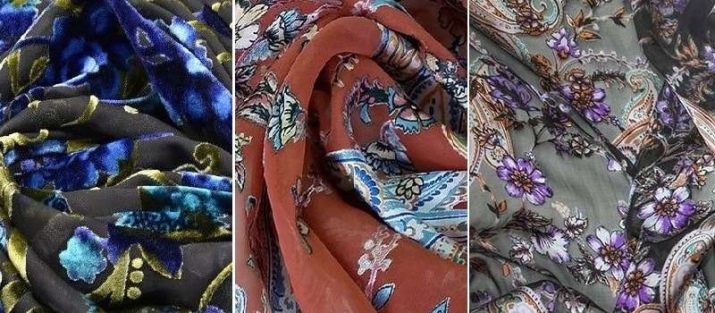
There are also mixed canvases designed using the described technique.
Materials after the etching procedure can be of two types:
-
transparent;
-
matte.
A relatively new type of material is devorene neoprene. This lightweight fabric has excellent dimensional stability. The standard blade is in the form of expanded rubber sheet. To obtain the effect of an etched fabric, a knitted fabric is made from neoprene fibers by adding viscose.
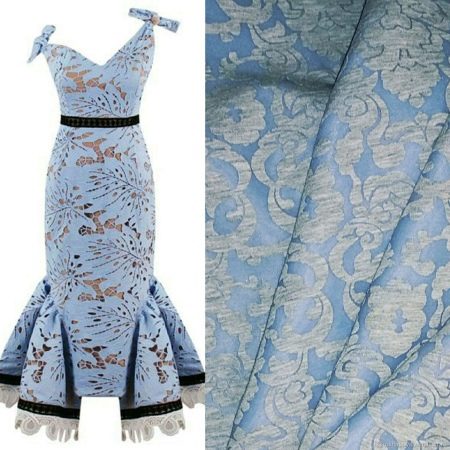
Application
In the textile industry, everyday things and excellent evening dresses, fabric elements of interior decor and household items (bedspreads in bedrooms, curtains, pillow cases, tablecloths, etc.) are sewn from fabric.
Wedding decorations of the bride and cocktail dresses look amazing. Lightweight fabric does not burden when worn, does not constrain the body, favorably and nobly emphasizes the smoothness of the forms.
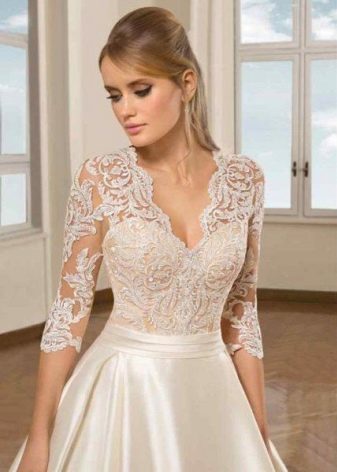
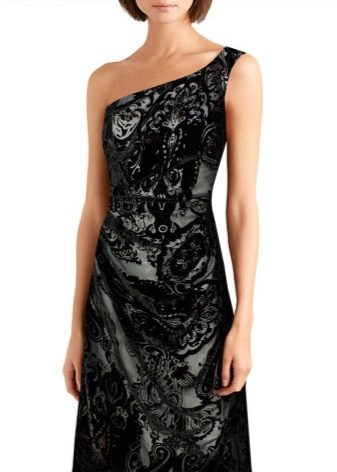
Casual styles are often paired with heavy denim or durable gabardine. In the interior, the airy material DeVore perfectly coexists with the noble tapestry.
Devore velvet is a favorite for festive outfits of impressive sophistication and luxury... Clothes from devore on Italian panne velvet allow a woman to be irresistible at any event.
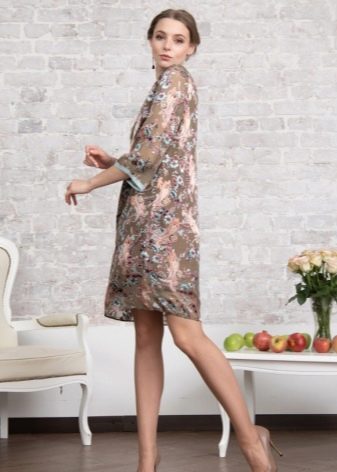
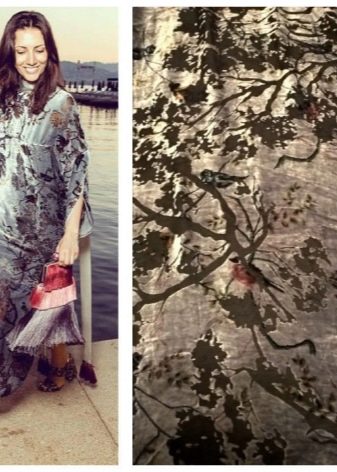
Devore is generally considered a feminine material. Things from it are obtained as if weightless in appearance. At the same time, the products fit the figure well, but do not constrain. Devore is traditionally sewn into:
-
sundresses;
-
pants;
-
cardigans;
-
skirts;
-
blouses;
-
dresses of different styles and styles;
-
window decor;
-
bed sets.
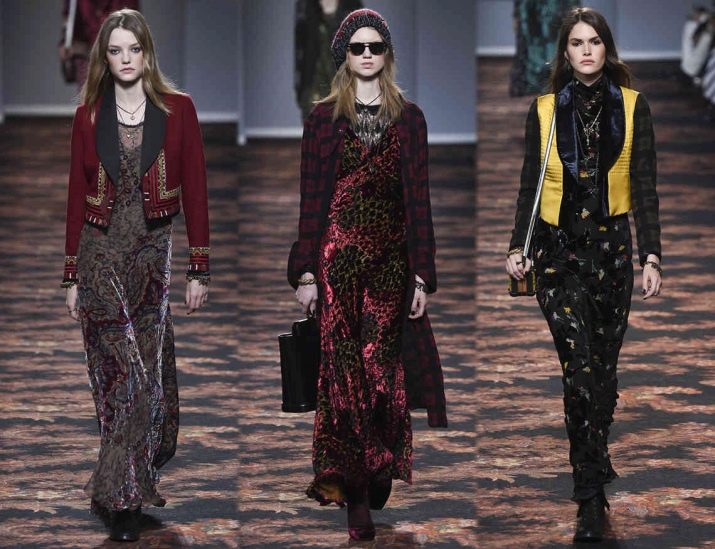
For decorating window openings, manufacturers produce stunningly beautiful curtains and graceful curtains with intricate devore style patterns. Spectacular canvases allow you to create a cozy interior. Often in interior design, designers use devore organza.
Tablecloths, draperies and panels created from natural materials with "etching" devore serve as attractive accents in home decoration. The author's sketches for applying convex drawings are also in demand.
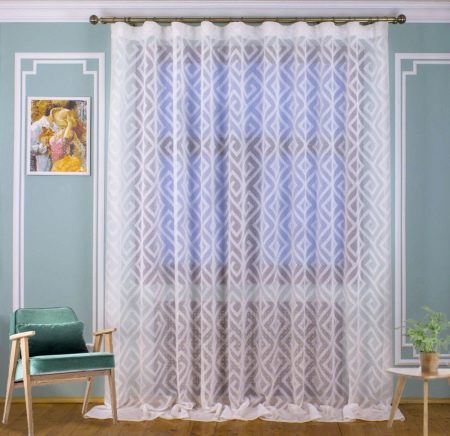
Things created from such materials are different:
-
hygroscopicity;
-
sufficient tensile strength;
-
comfort - light, soft, pleasant to the touch;
-
wear resistance and long-term use;
-
hypoallergenic;
-
unpretentious care;
-
burnout resistance;
-
good heat exchange;
-
air permeability;
-
visual aesthetics.
Of the minuses, it is worth highlighting only the high cost of the material due to the use of complex web processing technology. But the aesthetics and durability of the resulting material fully justify the price.

Noble fabric, luxurious and stylish, popular for exclusive wardrobe and home textiles. Its scope is not limited to any framework, which is very attractive to designers.
The only thing that does not allow you to have many things from Devore in use may be the high cost of such clothes. Therefore, most often dresses and blouses are sewn out of expensive fabric for going out, less often - items for everyday use. Silk satin, organza, leather, suede and even natural fur can be chosen as fabric companions.
For sewing bedding sets, the material with a natural composition is taken as a basis. And also decorative pillows, bedspreads, curtains are sewn.
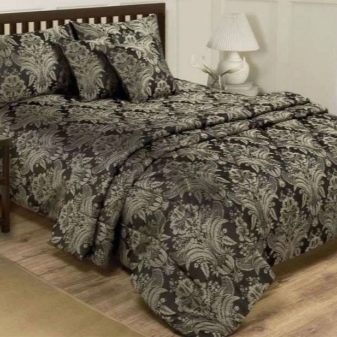

Care
Despite the elegance of the texture, delicate products are easy to handle and easy to care for. Before sending any item with a Devore pattern to the wash, it is important to read the detailed care instructions described on the label.
Weightless textiles should preferably be washed by hand, with preliminary soaking in warm water with a delicate detergent composition. We recommend using gel detergents. Bulky items, for example, curtains, tablecloths, etc., can be easily washed in an automatic machine, setting the delicate mode and the temperature no higher than 40 degrees.
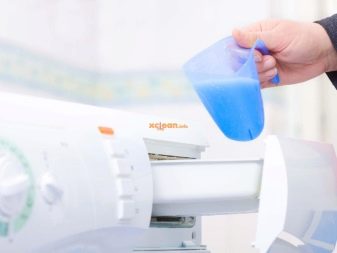

Drum spin is not suitable for soft fabrics. It is preferable to squeeze them out by hand, avoiding vigorous twisting. The washed items should not be dried near heat sources.
It is recommended to iron such a delicate material only from the inside out by setting the delicate mode. For fabrics with a velvety structure, you need to put a terry towel to prevent creasing of the pile.
The need for professional cleaning appears in rare situations. Do not use aggressive stain removers at home.

It is better to take wedding or cocktail dresses of complex cut, as well as products with decorative elements to a professional dry cleaner.








